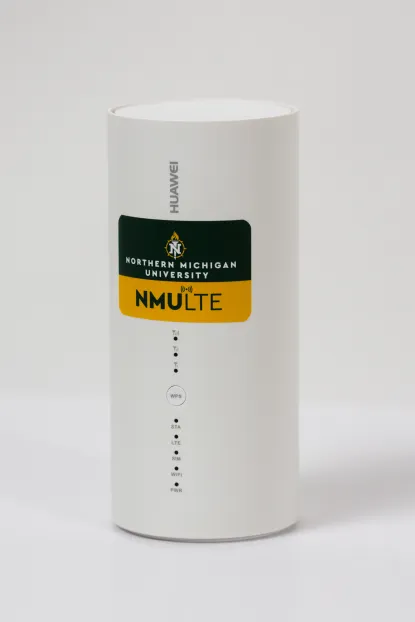
LTE at NMU
LTE is the next generation (4G and 5G) of wireless. NMU's LTE network has a much broader access than it's WiFi network, meaning that you can connect to the NMU network from more places off campus than ever before. However, NMU LTE is not a replacement for the NMU WiFi network. Connecting to 802.11 agn or 802.11ac WiFi or to an orange wired gigabit data jack should always be your choice when you are on the Northern campus. LTE where available is your alternative when you are off campus.
Educational Access Network (EAN)
If you're only looking to take a few courses for personal or professional development, the Educational Access Network allows students to enroll in a selection of online courses while also having the option to connect to NMU's high-speed internet in your home or on campus.
Connecting to LTE
- How to connect to LTE? Click here to go to the Academic Computing Web site and learn how to connect to the LTE network.
- How to complete installation of LTE? Click here to go to the Academic Computing Web site, go to "Computing News" and select the NMU LTE Update link for your model of notebook
- What to expect from LTE connection? This link brings you to a page with a detailed explanation of how to find LTE and what to expect when trying to use the LTE network.
- Even though the LTE network is seen on campus and usable, it is not meant for wireless access when on campus. The LTE notebook's have a WiFi and an LTE card. The WiFi network was designed for high density in building and outdoor use on and close to campus. The LTE network should be used when NMU WiFi is not available. The WiFi network is 5-10 times faster than the LTE network.
Where is it found?
The NMU LTE network is continually adding new areas, see where we currently offer service and where the future is planned by visiting the NMU EAN website. The LTE network is not targeted to work in the residence halls or on campus. This is why the wireless cards in your NMU notebook support both WiFi and LTE. When on campus, use WiFi.
When should it be used?
LTE coverage is measured in miles and not feet like WiFi. However, LTE networks are not faster than WiFi networks, they just have a larger coverage area. In fact, 802.11agn or 802.11ac WiFi is about 5-10 times faster than the LTE network. Average LTE speeds are 100kb-5mb UL and 1-15mb DL depending on distance from the serving tower site and building construction of the building you are in.
So, when you are on the NMU campus, you should turn LTE off and then connect to the NMU WiFi network as it much faster and has better in building signal strength. Likewise, when you are on campus and have access to a wired orange data jack, it will always be your fastest, strongest Internet connection. But when you're off campus, LTE is what you should choose to use when available.
Why is LTE and WiMAX important to NMU?
Northern has the largest private educational LTE network in the United States and is one of the first universities to deploy a 4G WiMAX network. With more than two-thirds of NMU students living off campus, being able to provide Internet access off campus helps expand the learning environment.
Who are our partners in building the network?
The cities, towns, townships, and villages throughout the area surrounding the University who share infrastructure needed to house the LTE equipment.
The world's leading technology companies used to build the LTE network, including Huawei, Intel, Lenovo, Cisco. These tech leaders are including NMU students in the research and implementation of this endeavor.
NMU thanks all of our partners for their continued support!







